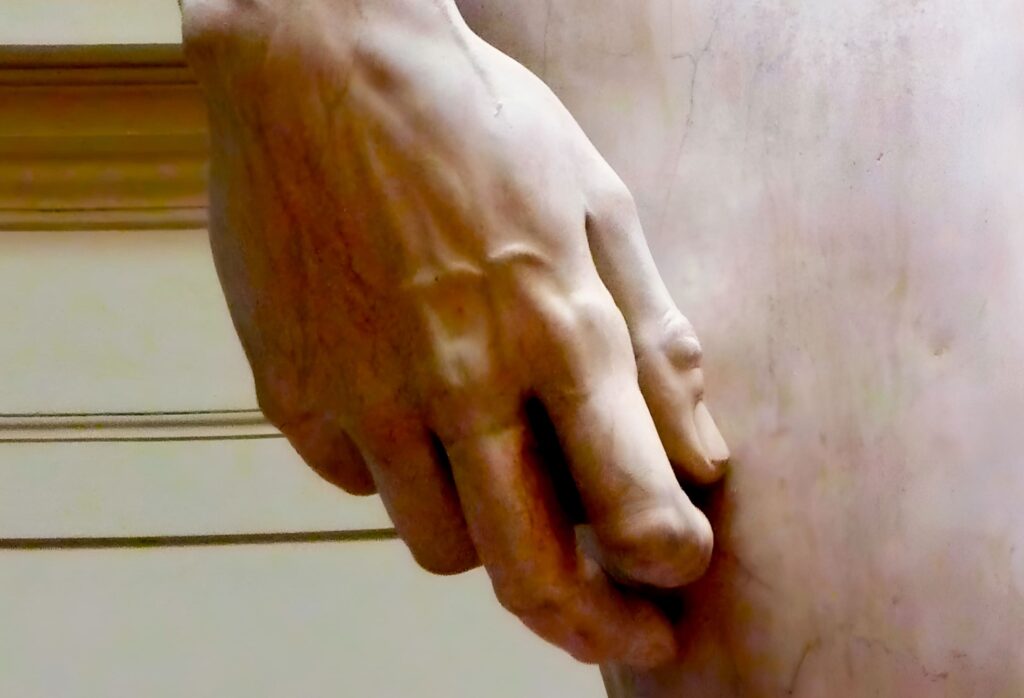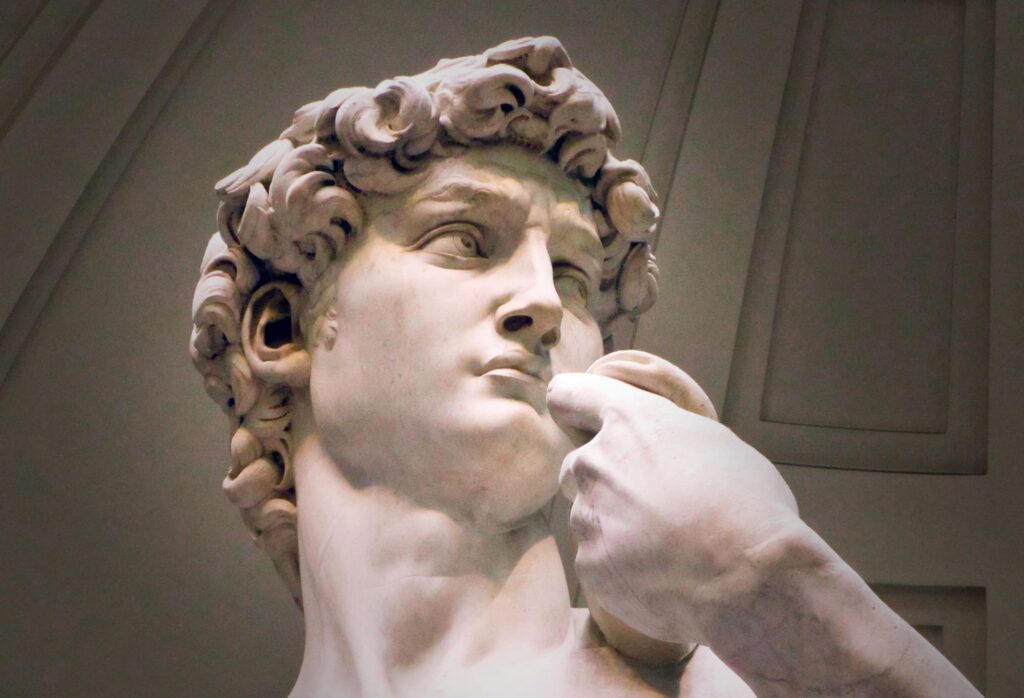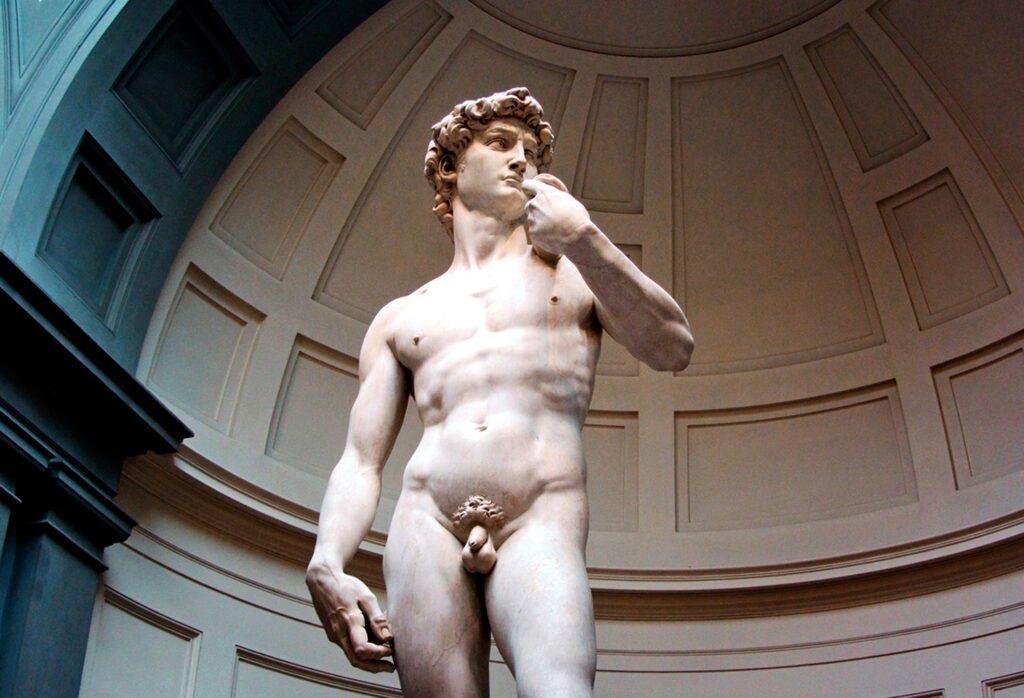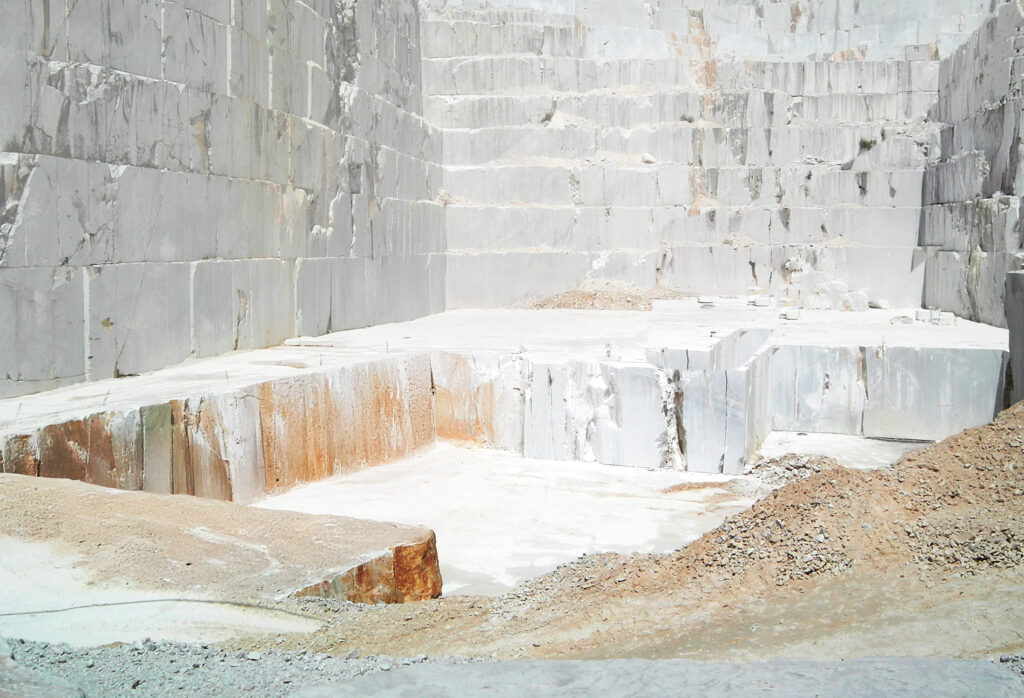When it comes to Renaissance sculpture, one work stands out above the rest, Michelangelo’s iconic sculpture of David. It was carved in marble between 1501 and 1504. This iconic figure represents not only the young biblical hero who defeated Goliath, but also the ideal of human perfection, restrained strength and classical beauty. His silhouette has become an icon of Western art, admired by experts, artists and visitors from all over the world.
At Capa Esculturas, where we understand art as a fusion between technique and emotion, we analyze this masterpiece by Michelangelo, which has inspired generations of sculptors. Today it remains an inexhaustible source of study and admiration, not only for its aesthetics, but also for its technique, symbolism and legacy.
The origin of marble sculpture
The most surprising thing about Michelangelo’s David is its origin. The block from which it was carved had been abandoned in the cathedral of Florence for more than 40 years, rejected by other artists who considered it too narrow and difficult to work with.
However, Michelangelo, a young sculptor barely 26 years old, accepted the challenge of bringing the material back to life.With chisel and mallet, he turned that discarded block into a sculpture more than five meters high that still impresses today for its level of detail and realism.

The process was very long and complex, taking place in secret in the workshop of the Opera del Duomo. For more than two years, Michelangelo worked tirelessly, facing imperfections in the marble, structural limitations and its enormous symbolic weight. Representing the David, symbol of the Florentine Republic, was no easy task, as it was a truly political sculpture, loaded with meaning.
Sculpture technique David
Beyond its visual impact, David’s sculpture has a profound meaning. His serene and firm posture represents the intelligence, courage and determination of the Florentine people in the face of their enemies. Unlike other representations, the symbolism of David focuses on the moment before combat, when everything is concentration and strategy.
Anatomic study and proportions of Michelangelo’s David
David’s body provides exceptional dramatic tension. The fixed gaze, the subtly turned body, his scowl, and other aspects convey a restrained strength. The sculpture does not appear violent, but under control and cautious in anticipation.
From the technical point of view, the study of anatomy in art reaches here one of its peaks. Michelangelo was not only a sculptor, but also a student of the human body. During his study he observed corpses, analyzed muscles and bones, and poured all this knowledge into marble. Every fold of the skin, every muscle tension, every visible vein is executed with a precision worthy of a surgeon.

Although the proportions are slightly altered, as the head and hands are slightly larger than any person, this responds to a visual resource designed to be seen from below. These technical decisions continue to fascinate those who study human proportions in art.
The Legacy of David in Contemporary Sculpture
Today, the same materials are used, but contemporary processes such as 3D modeling or robotic milling allow for more advanced precision, but always with respect for the great masters of the past. The influence of the Renaissance sculptor is still very present today.
Figurative inspiration in sculptures
In Capa Esculturas, many of our pieces linked to figurative art, find sculptural inspiration in works like this one. Studying how Michelangelo resolved volumes, postures, or movement, helps us to perfect our own techniques.
The search for perfect proportion, structural balance and restrained expression are pillars shared with classical art. In realistic sculptures, we can see how Michelangelo’s legacy lives on. We are inspired by his creativity, technical mastery and his way of turning marble into flesh and soul.
In addition, understanding the sculptural techniques of the great masters allows us to apply them to current commissions in materials such as bronze, resin or stainless steel. In this way, we are able to pay homage to the past while responding to the needs of the present.
Where is Michelangelo’s David: Location, replicas, and cultural impact
The sculpture of David was originally installed in the Piazza della Signoria, in front of the Palazzo Vecchio. There it became a symbol of resistance to tyranny and one of the city’s greatest emblems.
In 1873, due to the deterioration of the stone, it was moved to the Galleria dell’Accademia in Florence, where it is kept today. An exact replica was placed in its place. Since then, the sculpture in Florence has become a point of pilgrimage for thousands of visitors every year.

But the impact of Michelangelo’s David is not limited to Italy, as there are replicas all over the world and his figure has been used in films, books, exhibitions and even advertising campaigns. It is, without a doubt, one of the most recognized famous sculptures on the planet.
Carrara marble, a timeless material in sculpture
The use of white Carrara marble is not a casual choice. This material has been used since classical antiquity, providing elegance, strength and visual purity. Its fine grain and uniform color allowed Michelangelo to carve minute details with extraordinary precision.
Michelangelo affirmed that the sculpture was already inside the block, it only had to be liberated. This vision connected him intimately with the material, which he did not consider simply a raw material, but an ally in his creativity.

In our foundry we continue to work with marble sculpture in some of our most special orders. The tradition of direct carving, although less common than our bronze sculptures, is still alive thanks to great expert craftsmen who master this technique with sensitivity and respect for history.
Marble continues to be a material in great demand by luxury collectors, public institutions or artists in search of timeless works.Its presence imposes, excites and dignifies any space. For us, it is not just a material, but a link between classical art and contemporary sculpture.
Michelangelo’s David is an example of sculptural perfection.
When we speak of Michelangelo’s David sculpture, we speak of sculptural perfection. It is a lesson in anatomy, narrative composition, and all condensed into a single dazzling piece. Over the centuries this work has been a source of admiration, debate and study. In addition, it has played a fundamental role in the inspiration of new works that make up the universe of sculptures inspired by it.
At Capa Esculturas we observe the past with respect and a willingness to learn. Michelangelo’s legacy remains present in every stroke and volume of today’s realistic works. Do you want to know more about how we transfer this inspiration to our creations?You can see the head of Michelangelo’s David that we made for Carlos Aires in the Sabrina Amrani exhibition.


